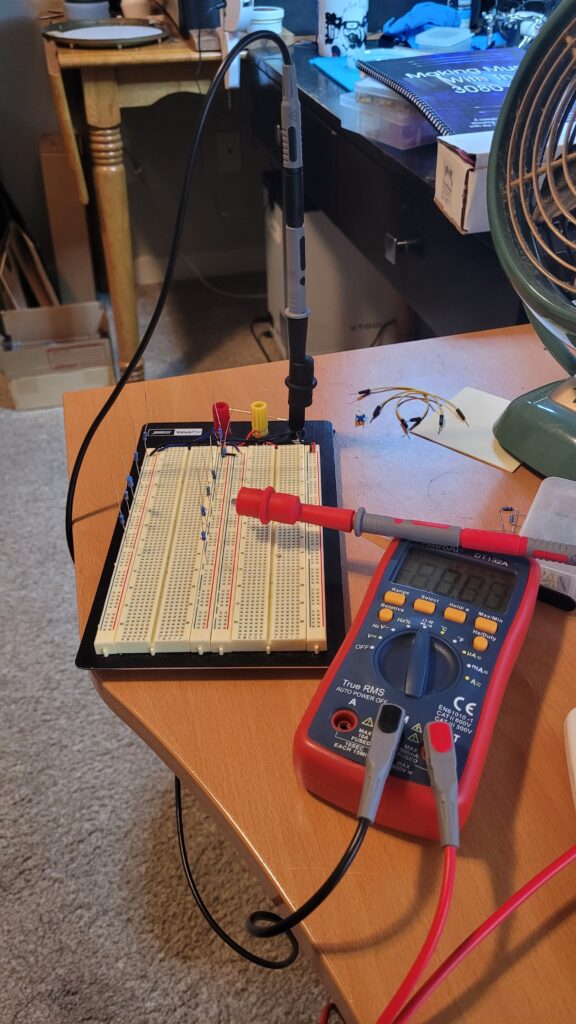
This is a bit niche, but it’s something I find super helpful, and maybe one day you will too.
Occasionally I will breadboard a circuit that I choose not to build, for one reason or another. When it comes time to clear off all the components, I am typically left with a handful of resistors I can’t readily identify. Resistors are color-coded and each one will have a series of colored bands that can be read to determine the value of the resistor. But, I’ve never properly learned to read them and there are often inconsistencies across manufacturers that make it really difficult to tell the difference between one company’s red and another company’s brown.
A better way is to use a multimeter to measure the resistance across the resistor, by attaching the leads of the multimeter to the ends of the resistor. This can become time consuming, if you’ve got 20 resistors to measure and put away. So, I came up with this little hack to make the process a little faster.
In the picture above is a powered breadboard. The red, yellow and black jacks at the top of the board can be plugged into a power supply. Each of these jacks is wired to one of the vertical sets of holes that run down each side of the breadboard (separated by the blue and red lines). These are the power rails of the breadboard. I typically have mine wired so all of the blue holes are tied to a common ground, while the red holes on the left side are wired to +12V and the red holes on the right side are wired to -12V.
So, whatever is plugged into the black jack at the top of the board is what you get when you plug into one of the blue holes. Now, instead of attaching the leads of the multimeter to both ends of the resistor, one resistor at a time, I can attach one lead straight to the black jack. Then if I insert one end of each resistor into a blue hole, I can touch the other multimeter lead to the end of the resistor sticking up, and get a reading of the resistance.
In the end, I’m probably not saving that much time, but it is decidedly less frustrating and tedious than trying to hold each little resistor and attach the leads to the ends.